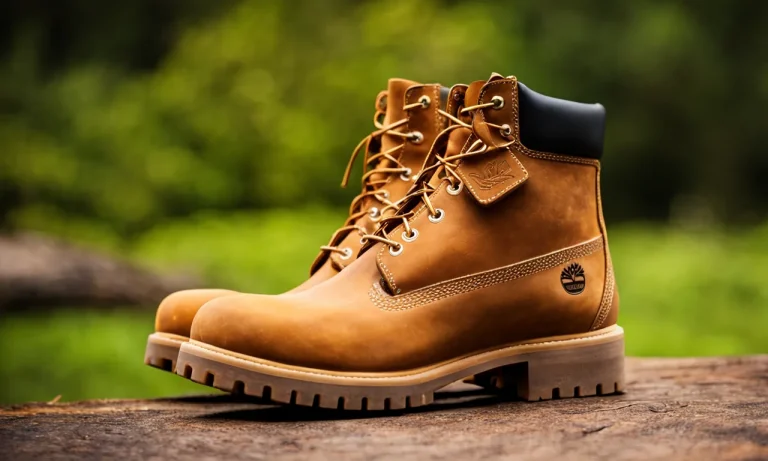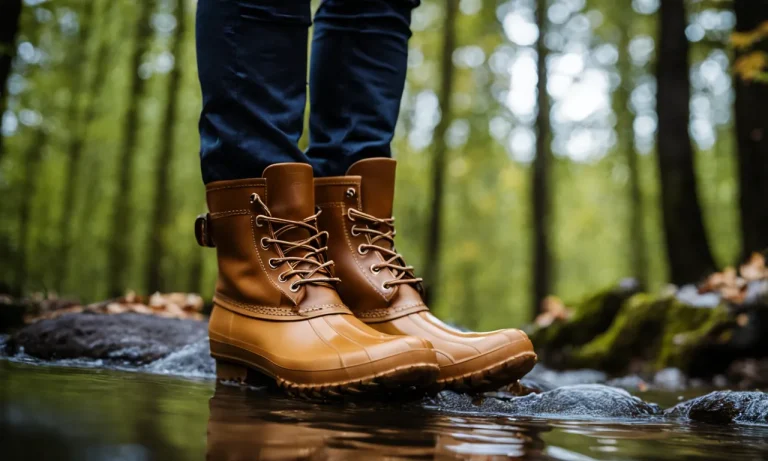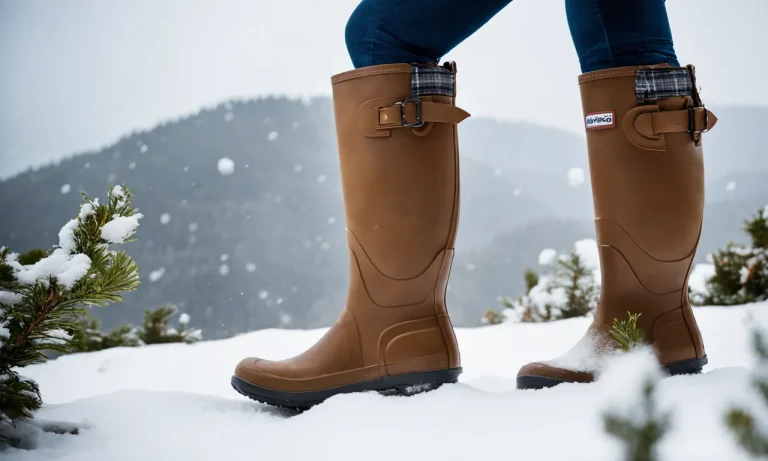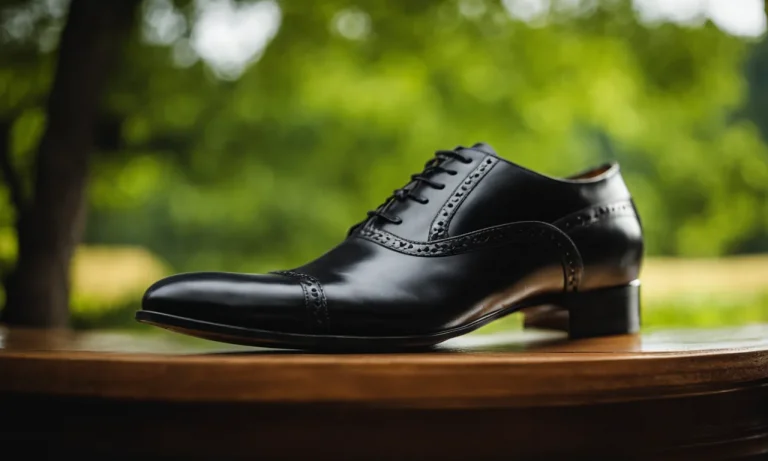Smelly, dirty shoe insoles can ruin the comfort and freshness of your favorite shoes. But with the right cleaning methods and products, you can get your insoles looking and smelling fresh again.
If you’re short on time, here’s a quick answer to your question: Remove the insoles from your shoes and use a mix of mild soap and water to scrub away dirt and odors. Let them air dry completely before putting them back in your shoes.
In this comprehensive guide, we’ll go over everything you need to know to clean your shoe insoles effectively.
Remove the Insoles from Your Shoes
When it comes to cleaning shoe insoles, the first step is to remove them from your shoes. This allows for better access and ensures a thorough cleaning. Here’s how to do it:
Grab the heel and toe of the insole
Start by grabbing the heel and toe of the insole firmly. You may need to loosen it a bit by pressing on the sides of the shoe to create some space.
Gently pull it out
Once you have a good grip, gently pull the insole out of the shoe. Be careful not to tear or damage it in the process. If it feels stuck, you can use a spoon or a flat object to help pry it out.
Inspect for any tears or damage
After removing the insoles, take a moment to inspect them for any tears or damage. If you notice any, it’s a good idea to repair or replace them before cleaning. This will ensure that they last longer and provide optimal comfort and support.
Remember, cleaning your shoe insoles regularly not only helps to keep them fresh and odor-free but also extends their lifespan. Now that you’ve successfully removed the insoles, let’s move on to the next step in the cleaning process.
Clean with Soap and Water
When it comes to cleaning shoe insoles, one of the easiest and most effective methods is to use soap and water. Follow these steps to get your insoles looking and smelling fresh:
Mix a mild detergent like dish soap with warm water
To create a cleaning solution, mix a few drops of mild detergent, such as dish soap, with warm water. The warm water helps to loosen dirt and grime, while the detergent helps to break it down. It’s important to use a mild detergent to avoid any potential damage to the insoles.
Use a small brush or towel to scrub the surface
Once you have your cleaning solution ready, use a small brush or towel to gently scrub the surface of the insoles. Pay extra attention to any areas that appear dirty or stained. The brushing action helps to lift dirt and debris from the insoles, leaving them clean and fresh.
Rinse thoroughly with clean water
After scrubbing the insoles, rinse them thoroughly with clean water to remove any remaining soap residue. This step is important to ensure that no soap is left behind, as it can cause irritation and discomfort when wearing the shoes again.
Repeat if very dirty
If your insoles are particularly dirty or have stubborn stains, you may need to repeat the cleaning process. Don’t be discouraged if you don’t achieve perfect results on the first try. Simply repeat the steps until your insoles are clean and odor-free.
Remember, regular cleaning of your shoe insoles not only helps to maintain their appearance, but it also promotes better foot hygiene. By following these simple steps, you can keep your insoles clean and fresh, ensuring a comfortable and odor-free shoe-wearing experience.
Disinfect with Vinegar or Baking Soda
Keeping your shoe insoles clean is essential for maintaining a fresh and odor-free environment for your feet. One highly effective way to disinfect your shoe insoles is by using vinegar or baking soda.
Both of these common household items have natural antibacterial properties that can help eliminate odors and bacteria.
Help eliminate odors and bacteria
Vinegar, specifically white vinegar, is known for its ability to kill bacteria and neutralize unpleasant odors. It is a natural disinfectant that can effectively remove dirt, sweat, and odor-causing bacteria from your shoe insoles.
Baking soda, on the other hand, is a powerful deodorizer that can help absorb and neutralize odors.
Soak insoles in a vinegar solution for 30 minutes
To clean your shoe insoles with vinegar, create a solution by mixing equal parts of water and white vinegar in a basin or bucket. Remove the insoles from your shoes and soak them in the vinegar solution for about 30 minutes.
This will allow the vinegar to penetrate the insoles and eliminate any bacteria or odors. After soaking, rinse the insoles with clean water and let them air dry before placing them back in your shoes.
Or sprinkle baking soda and let sit overnight before brushing off
If you prefer using baking soda, simply sprinkle a generous amount directly onto the insoles. Let the baking soda sit overnight to allow it to absorb any odors. In the morning, brush off the baking soda with a soft brush or cloth.
This method is quick and easy, making it a convenient option for regular maintenance of your shoe insoles.
Remember, regular cleaning and disinfection of your shoe insoles not only helps eliminate odors but also improves the overall hygiene of your shoes. It is recommended to clean your shoe insoles every few weeks, or more frequently if you have particularly sweaty feet or notice any strong odors.
By following these simple steps, you can ensure that your shoe insoles stay fresh, clean, and comfortable for your feet.
Air Dry Completely
After cleaning your shoe insoles, it is crucial to ensure they are thoroughly dried before placing them back into your shoes. This step is important to prevent the growth of bacteria and fungi, which can cause unpleasant odors and foot infections.
Here are some tips on how to air dry your shoe insoles:
Lay insoles out flat on a towel
Gently remove the insoles from your shoes and lay them out flat on a clean towel. This will help absorb any excess moisture and prevent the insoles from sticking to the surface they are placed on. Make sure to remove any dirt or debris that may have accumulated during the cleaning process.
Let air dry for 24-48 hours
Allow the insoles to air dry naturally for at least 24-48 hours. This timeframe will ensure that they are completely dry and ready to be used again. Placing them in a well-ventilated area will help speed up the drying process.
Rotate periodically
While the insoles are drying, it is a good idea to periodically rotate them to ensure even drying. This can be done by flipping them over or repositioning them on the towel. By rotating the insoles, you can prevent any areas from remaining damp and reduce the risk of mold or mildew growth.
Avoid direct sunlight
When air drying your shoe insoles, it is important to avoid exposing them to direct sunlight. Sunlight can cause the insoles to fade or become brittle, reducing their lifespan. Instead, choose a shaded area or an indoor spot away from direct heat sources.
By following these steps, you can ensure that your shoe insoles are properly air dried and ready to provide you with the comfort and support your feet need. Remember, taking proper care of your insoles will not only extend their lifespan but also contribute to the overall health and hygiene of your feet.
Freshen with Essential Oils or Baking Soda
One of the best ways to keep your shoe insoles smelling fresh is by using essential oils or baking soda. Both options are natural and effective at neutralizing odors. Here’s how you can freshen your shoe insoles using these methods:
Add a few drops of tea tree, lavender, or lemon oil
Essential oils have antimicrobial properties that can help eliminate bacteria and fungi that cause odor. To freshen your shoe insoles, simply add a few drops of tea tree, lavender, or lemon oil to each insole.
Spread the oil evenly and let it soak in for a few minutes before putting the insoles back in your shoes. Not only will your shoes smell great, but the essential oils will also provide a refreshing scent.
Or sprinkle with baking soda before putting back in shoes
Baking soda is another fantastic option for freshening shoe insoles. It works by absorbing moisture and neutralizing odors. To use baking soda, sprinkle a generous amount on each insole and let it sit for a few hours or overnight.
Then, simply shake off the excess before putting the insoles back in your shoes. Baking soda is a natural deodorizer and can help eliminate even the toughest odors.
Helps keep insoles smelling fresh
Using essential oils or baking soda regularly on your shoe insoles can help keep them smelling fresh for longer periods. By eliminating odor-causing bacteria and absorbing moisture, these methods can help extend the lifespan of your insoles.
Additionally, they provide a pleasant scent that adds to the overall freshness of your shoes.
For more information on the benefits of essential oils or baking soda for shoe care, you can visit www.healthline.com or www.thespruce.com.
When to Replace Your Insoles
Knowing when to replace your shoe insoles is crucial to maintaining foot health and comfort. Over time, insoles can become worn out and lose their effectiveness. Here are three signs that indicate it’s time to replace your shoe insoles:
If torn, damaged, or excessively worn
If you notice that your insoles are torn, damaged, or excessively worn, it’s a clear indication that they need to be replaced. Over time, the constant pressure and friction from daily use can cause insoles to break down.
This can lead to discomfort, poor shock absorption, and even potential foot injuries. Don’t wait until your insoles are completely worn out before replacing them. It’s better to be proactive and replace them as soon as you notice any signs of damage or wear.
Loss of cushioning and support
Another sign that your insoles need to be replaced is a loss of cushioning and support. Over time, the materials in the insoles can become compressed and lose their ability to provide adequate cushioning and support. This can result in foot fatigue, pain, and discomfort.
If you find that your insoles no longer provide the same level of comfort and support as they used to, it’s time to invest in a new pair.
Persistent odors or stains
Persistent odors or stains on your insoles can be a clear indication that they need to be replaced. Despite regular cleaning and maintenance, insoles can absorb sweat and bacteria over time, leading to unpleasant odors.
Additionally, stains can accumulate from dirt and other particles that get trapped in the insoles. If you’ve tried various cleaning methods and the odors or stains persist, it’s a sign that it’s time to replace your insoles.
Remember, replacing your insoles regularly is essential for maintaining foot health and overall comfort. It’s recommended to replace them every six to twelve months, or sooner if you notice any of the aforementioned signs.
By doing so, you’ll ensure that your feet are properly supported, cushioned, and odor-free.
Conclusion
With some mild soap, water, and elbow grease, you can get your shoe insoles looking and smelling fresh again. Be sure to let them dry fully before putting them back in your shoes to prevent bacterial growth. Replace insoles periodically to maintain comfort and hygiene.
Clean insoles regularly as part of caring for your footwear investment.






